During 18th century, most lace were handmade by lace-maker. This was a tremendously slow work. Especially for those finest lace with intricate knotting and pattern, due to the fineness of the thread and the density of its pattern, as well as the airy effect that required meticulous treatment, it usually cost one lace-maker many hours to produce a tiny piece. At a maximum, each lace maker could produce only three square centimeters per day. Therefore, the process of making lace was very time and labor intensive.
Hover your mouse over lace making desk. If clear highlight boxes appear, click on them to learn more about the lace making process!
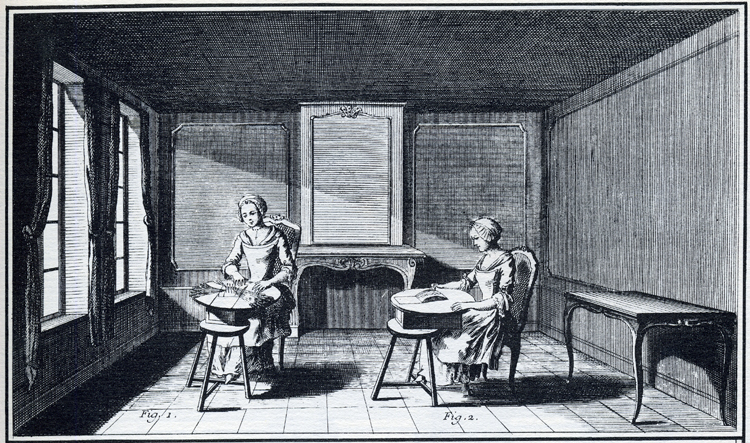
Encyclopédie plate depicting lace makers. Pop-up boxes will show up when user clicks the mage map areas on lace making desk. In the pop-up boxes are information about the making process of needle lace and bobbin lace. There are also links that lead the users to the youtube videos that show the complex and time-consuming process of bobbin lace and needle lace making. Original image by Professor Higonnet. Image map and image map area by Constance Zhou.
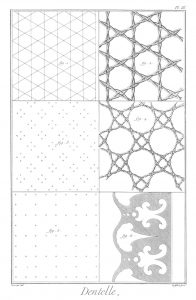
Encyclopédie plate of pin hole. Patterns for bobbin lace on left, and intricate lace designs on right. Original image by Professor Higonnet.

Image shows the amount of lace one lace marker can produce in 168 hours. Original Image by Professor Higonnet.
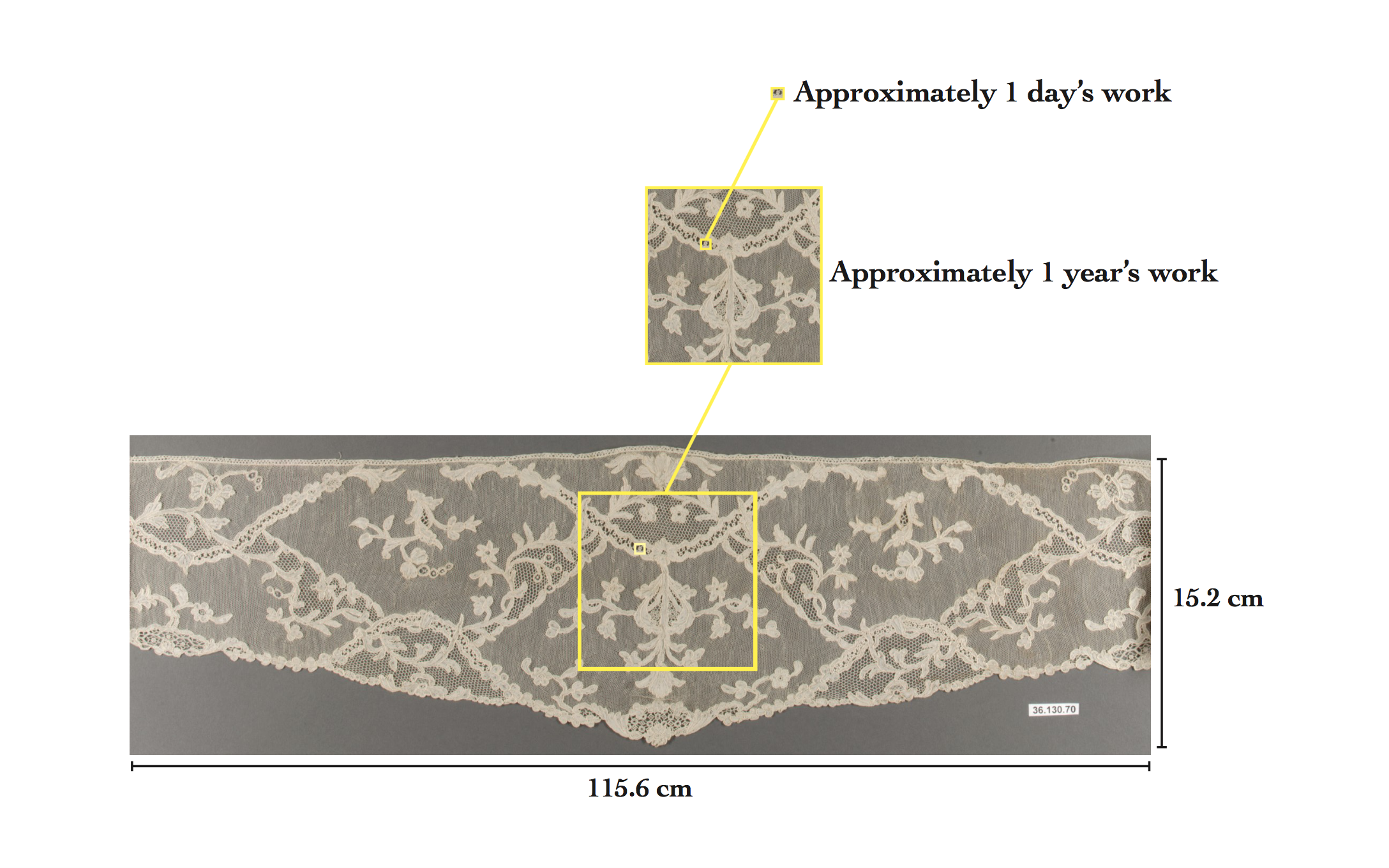
Image shows the amount of lace one lace marker can produce in one year and in one day. Original Image by Professor Higonnet.
Click the lace sleeve in the portrait below to see how many hours work a lace maker took to produce that amount of lace.
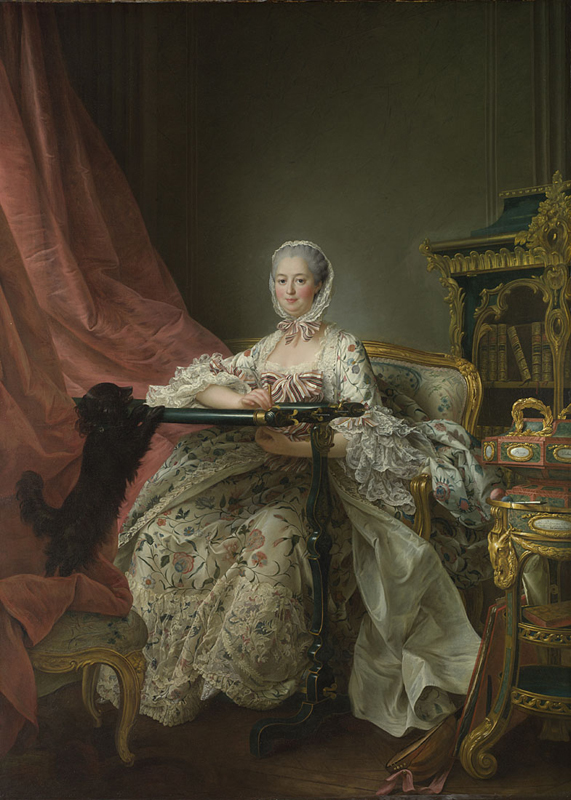
François-Hubert Drouais, Madame de Pompadour at her Tambour Frame, (ca.1763-4), Bought, 1977. The National Gallery, London. The image map area lead to a pop-up window, showing about how many hours work the lace maker took to produce this amount of lace. Annotated image and image map by Constance Zhou.
Click the lace sleeve in the portrait below to see how many hours work a lace maker took to produce that amount of lace.
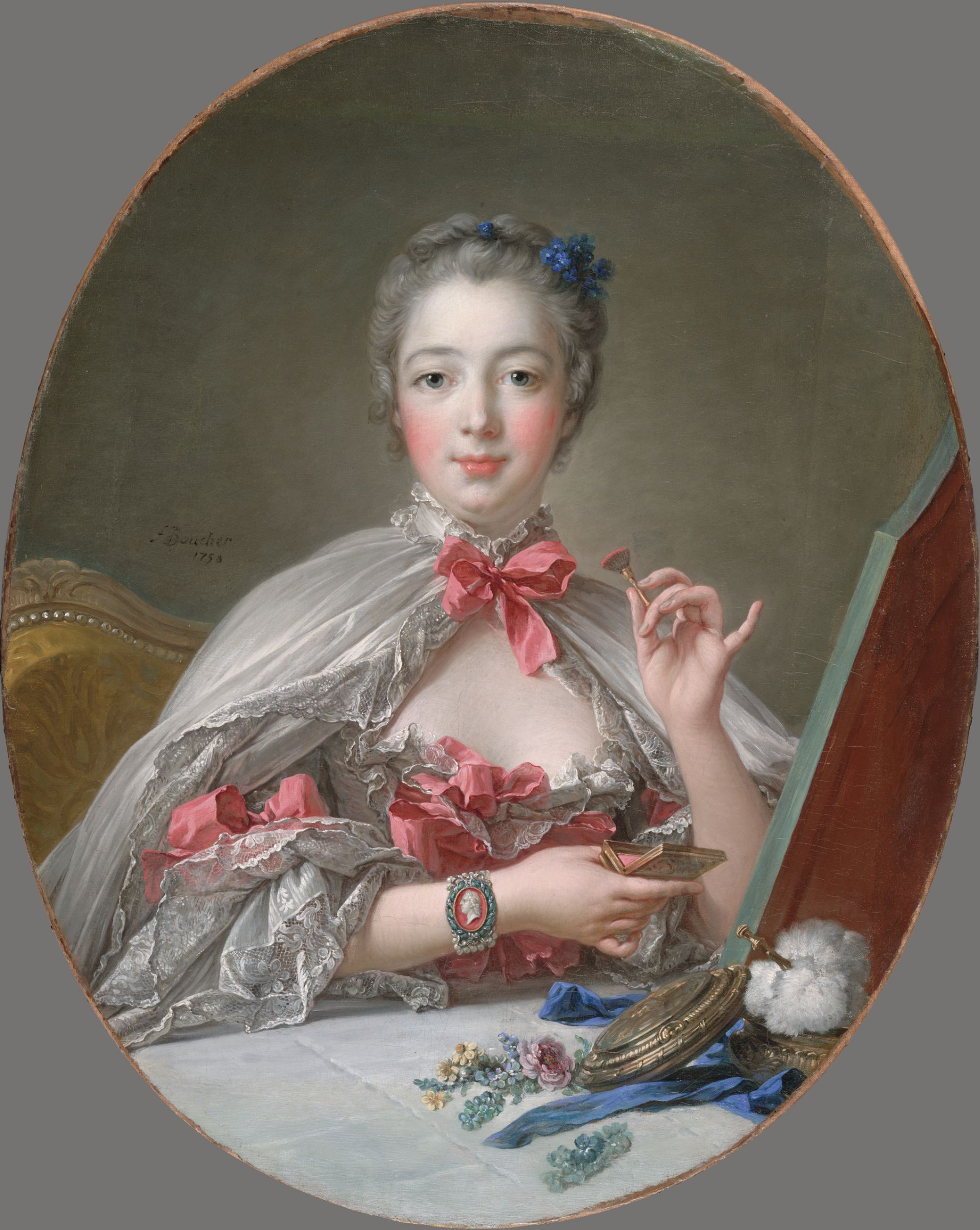
François Boucher, Jeanne-Antoinette Poisson, Marquise de Pompadour (ca.1750), Fogg Museum, Bequest of Charles E. Dunlap. The image map area lead to a pop-up window, showing about how many hours work the lace maker took to produce this amount of lace. Annotated image and image map by Constance Zhou.
Pages
practice
